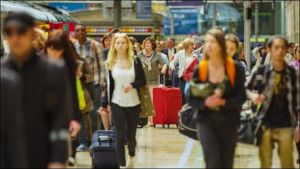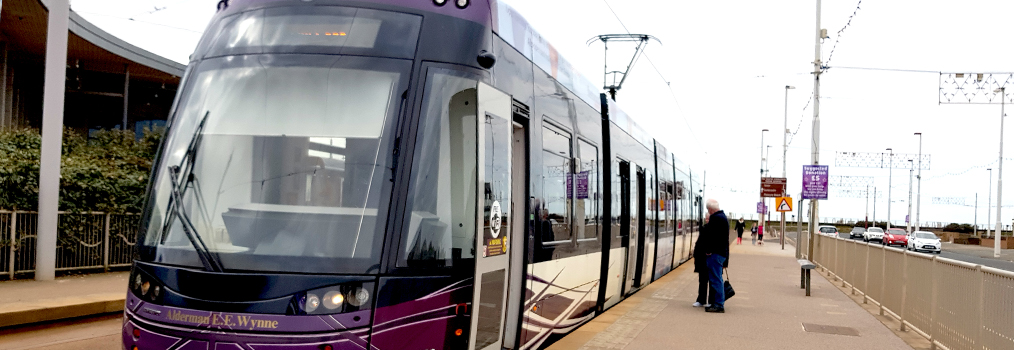National Travel Survey Update
New data confirms huge changes in public transport use since the pandemic
The Department for Transport (DfT) has published new data from its National Travel Survey*, combining data from the last six months of the 2022 survey with the first six of 2023. The limited number of tables predates publication of the full 2023 data later in the year. The figures point to a continuing recovery from the Covid-19 pandemic, but the detail tables show how much things have changed since 2019.

National Travel Survey Update
New data confirms huge changes in public transport use since the pandemic
This latest update to the National Travel Survey† offers further confirmation, if it were needed, that the onset of the Covid-19 pandemic turned the market for GB public transport upside down. Historic patterns of use by journey purpose and demography changed completely. On the railways, almost two decades of steady growth in rail trip making were slammed into reverse, whilst previous falls in bus demand were accelerated and have still to recover.
The figures both echoes and reinforces figures from the DfT on demand recovery. On the railways, these suggest that, if anything, demand started to go backwards in the first three months of this year. Patronage averaged just under 83 per cent of pre-pandemic levels excluding the Elizabeth Line between January and March. This compared with 87 per cent across the whole of 2023 and 79.3 per cent in 2022. This makes full recovery still seem a long way off.
On the buses, demand is generally rising again, but only slowly. The DfT figures show that, over those same three months, demand averaged just over 90% of pre-pandemic levels outside the capital and just below 90% in London. This compared with 88.9% and 88.4% respectively during 2023
The NTS update goes a long way to explaining the shortfall, mapping both the changes in journey purpose and in the age and gender of rail users. The loss of commuting trips is well known and understandable, given the moves towards working from home and hybrid working. Rail lost some 300 million commuting trips a year compared with 2019 – pretty much the whole of the 307 million national shortfall. Business travel accounts for 76 million more but this loss is offset by gains in education and leisure travel.
The loss of commuting trips is less significant in the bus market, accounting for 103 million journeys a year, 10% of the post-Covid shortfall. This is dwarfed though by the fall in shopping trips, accounting for some 466 million trips a year compared with 2010, almost half of the one billion passenger journeys lost over the 14 years since. A fall in leisure journeys accounts for another 162 million trips, or 16% of the loss.
The shifts in the age profile of both bus and rail users both reflects and influences this. For example, the fall in rail commuter trips can be linked with the decline in trip rates amongst those between 30 and 59, whilst the increased amongst the under 17s can be linked to the rise in education and leisure travel, the latter associated with the evident rise in weekend family trips. The fall in trip rates amongst older people mirrors that seen in bus travel and can be attributed to ongoing nervousness about infection risks, but there was a strong recovery in 2022/23 amongst the over 70s which does offer some hope of a further revival.
The huge falls in bus trip rates by women across the board are striking, especially amongst the four age-groups above 40. This may be linked to the fall in shopping trips we’ve already discussed, but the suspicion must be that the fear of travel induced by the Covid-19 virus still lingers.
Of course, demand for all modes of public transport won’t have been helped that consumer spending also remains below pre-Covid levels and that the overall economic performance since the pandemic has hardly been stellar.
As so often in the past, then, both bus and rail industry have had to withstand a storm whipped up by factors outside managers’ control – not helped, though, by self-inflicted wounds of ongoing strikes, staff shortages and poor reliability in some areas. There are still many uncertainties about the future, but at least this sort of analysis enables greater understanding of where we’re at and helps identify some target markets for future growth.
Meanwhile, the future is very uncertain, driven by a further tech revolution from AI, the difficult economic and fiscal outlook post the General Election and the need to do more to achieve Net Zero targets. All these and more impinge on our ability to see into the future. It’s already clear that this will have profound and unknowable impacts on the way we live and the way we travel. Flexibility and speed of response will be essential. Let’s hope that the new ownership and regulatory framework that is likely to emerge can deliver this.
For more analysis, see NTS update confirms major shifts in bus trip making and/or NTS update confirms major shifts in rail trip making
† - The NTS is a household survey of personal travel, from data collected via interviews and a seven-day travel diary, which enables analysis of patterns and trends. The statistics for the year ending June 2023 include data from the second half of 2022 and the first half of 2023. In the year ending June 2023, the survey captured responses from 10,351 individuals covering 167,916 trips. The National Travel Survey mid-year estimates are available at https://www.gov.uk/government/statistics/national-travel-survey-mid-year-estimates-year-ending-june-2023.



